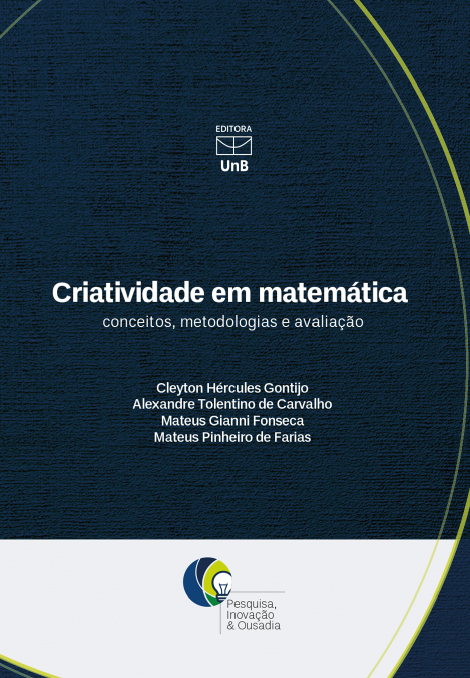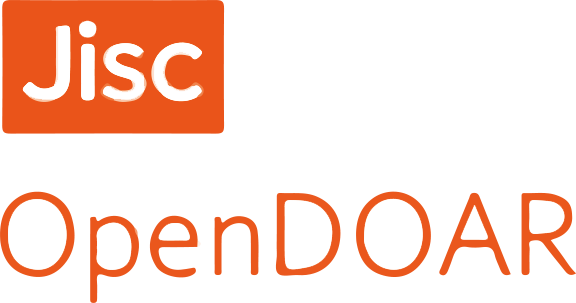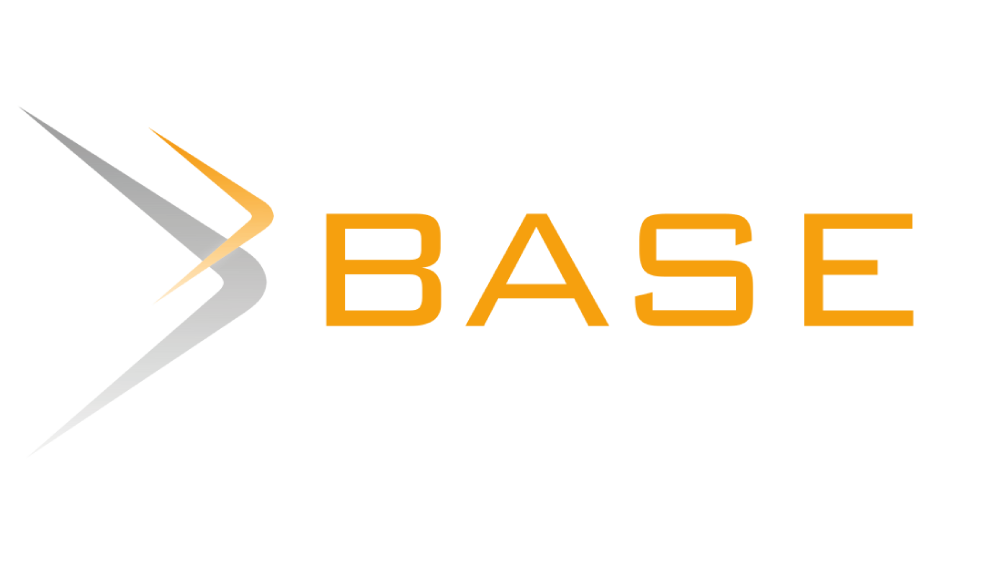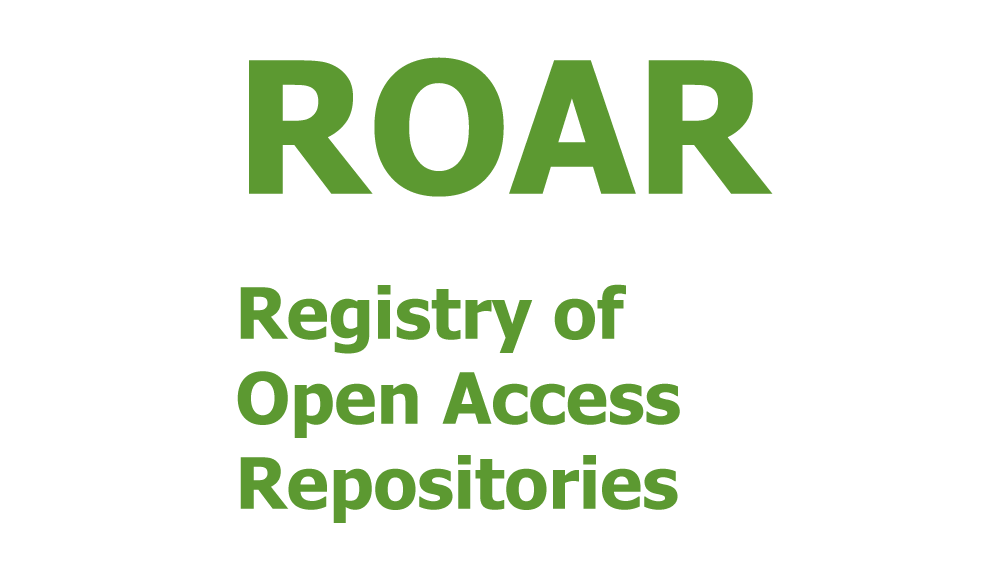Criatividade em matemática : conceitos, metodologias e avaliação
Palavras-chave:
Criatividade em matemática, Pensamento criativo em matemática, Criatividade em matemática - avaliação - estímuloSinopse
O livro Criatividade em matemática: conceitos, metodologias e avaliação traz um panorama das pesquisas acerca da criatividade em matemática, apresentando conceitos e estratégias didáticas para favorecer seu desenvolvimento e, ainda, critérios para a análise das produções dos estudantes a fim de identificar seu potencial criativo em matemática. A importância dessa discussão reside no fato de a matemática ser tratada, paradoxalmente, como uma área difícil, impossível de aprender, restrita aos gênios e, ao mesmo tempo, ser reconhecida como fundamental no processo de desenvolvimento científico e tecnológico, além de ser requisitada para a admissão nas principais instituições de ensino e na maioria das ocupações profissionais. Nesse sentido, as reflexões proporcionadas pelo tex to do livro poderão colaborar para a construção de propostas pedagógicas para as aulas de matemática com vistas à superação das representações negativas relacionadas à disciplina, bem como possibilitar uma nova dinâmica na forma de tratar os conteúdos de matemática e as relações entre professores e estudantes. O texto evidencia a resolução, formulação e redefinição de problemas como estratégias didáticas para orientar o trabalho pedagógico com vistas ao desenvolvimento da criatividade em matemática. Trata-se de uma obra original no cenário brasileiro, que contribui significativamente para a divulgação de estudos e pesquisas no campo da criatividade em matemática.
Capítulos
-
Introdução
-
Capítulo 1. Uma aproximação aos estudos da criatividade
-
Capítulo 2. Criatividade em matemática: conceitos e pesquisas
-
Capítulo 3. Estratégias para o desenvolvimento da criatividade em matemática
-
Capítulo 4. Avaliação de habilidades criativas em matemática
-
Considerações finais
-
Referências
-
Sobre os autores
Downloads
Referências
ACARA. Currículo australiano de matemática, 2013. Disponível em: <http://porvir.org/wpcontent/uploads/2014/09/CurriculoAustraliano_Matematica.pdf>. Acesso em: 9 fev. 2015.
AIKEN, Lewis R. Ability and creativity in mathematics. Review of educational research, Washington, DC, v. 43, n. 4, p. 405-432, 1973.
ALBUQUERQUE, Leila Cunha; GONTIJO, Cleyton Hércules. A complexidade da formação do professor de matemática e suas implicações para a prática docente. Espaço pedagógico, Passo Fundo, v. 20, n. 1, p. 76-87, jan./jun. 2013.
ALENCAR, Eunice Maria Lima Soriano. O papel da escola na estimulação do talento criativo. In: FLEITH, D. S.; ALENCAR, E. M. L. S. (Org.). Desenvolvimento de talentos e altas habilidades: orientação a pais e professores. Porto Alegre: Artmed, 2007. p. 151-161.
ALENCAR, Eunice Maria Lima Soriano. O perfi l do professor facilitador e do professor inibidor da criatividade segundo estudantes de pós-graduação. Boletim da Academia Paulista de Psicologia, São Paulo, v. 19, n. 1, p. 84-95, 2000.
ALENCAR, Eunice Maria Lima Soriano. Como desenvolver o potencial criador: um guia para a liberação da criatividade em sala de aula. Petrópolis: Vozes, 1990.
ALENCAR, Eunice Maria Lima Soriano; FLEITH, Denise de Souza. Inventário de práticas docentes que favorecem a criatividade no ensino superior. Psicologia, refl exão e crítica, Porto Alegre, v. 17, p. 105-110, 2004.
ALENCAR, Eunice Maria Lima Soriano; FLEITH, Denise de Souza. Criatividade: múltiplas perspectivas. 2. ed. Brasília: Editora da Universidade de Brasília, 2003a.
ALENCAR, Eunice Maria Lima Soriano; FLEITH, Denise de Souza. Contribuições recentes ao estudo da criatividade. Psicologia: teoria e pesquisa, Brasília, v.19, n. 1, p. 1-8, jan./abr. 2003b.
ALENCAR, Eunice. Maria Lima Soriano; FLEITH, Denise de Souza; VIRGOLIM, Ângela Mágda Rodrigues. Fatores inibidores à criatividade em estudantes universitários e professores. In: GUZZO, R. S. L. et al. (Org.). O futuro da criança na escola, família e sociedade. Campinas: Editora Átomo, 1995. p. 105-109.
ALMOULOUD, Saddo Ag. Fundamentos da didática da matemática. Curitiba: Editora UFPR, 2007.
AMABILE, Teresa M. The social psychological of creativity. Nova York: Springer, 1983.
AMABILE, Teresa M. Growing up creative. Buffalo, NY: The Creative Education Foundation Press, 1989.
AMABILE, Teresa M. Beyond talent: John Irving and the passionate craft of creativity. American psychologist, Washington, DC, v. 56, n. 4, p. 333-336, 2001.
AMABILE, Teresa M. Componential theory of creativity. Harvard Business School Working Paper. Boston, Massachusetts, 2012.
BAHAR, A. Kadir; MARKER, C. June. Exploring the relationship between mathematical creativity and mathematical achievement. Asia-Pacific journal of gifted and talented education, Pequim, v. 3, n. 1, p. 33-48, 2011.
BALKA, Don Stephen. The development of an instrument to measure creative ability in mathematics. 1974. 228 f. Tese (Doutorado em Educação, Currículo e Desenvolvimento) – Faculty of the Graduate School, University of Missouri, Columbia, EUA.
BOLDEN, David. S.; HARRIES, Tony V.; NEWTON, Douglas P. Pre-service primary teachers conceptions of creativity in mathematics. Educational studies in mathematics, Amsterdam, v. 73, n. 2, p. 143-157, 2010.
BRASIL. Ministério da Educação. Parâmetros Curriculares Nacionais: ensino médio: ciências da natureza, matemática e suas tecnologias. Brasília: MEC/SEMT, 1999.
BRASIL. Ministério da Educação. Parâmetros Curriculares Nacionais: matemática (5ª a 8ª séries). Brasília: MEC/SEF, 1998.
BRASIL. Ministério da Educação. Parâmetros Curriculares Nacionais: matemática (1ª a 4ª séries). Brasília: MEC/SEF, 1997.
BRASIL. Lei de Diretrizes e Bases da Educação Nacional. Lei número 9.394, de 20 dez. 1996.
BROUSSEAU, Guy. Os diferentes papéis do professor. In: PARRA, Cecília.; SAIZ, Irma (Org.). Didática da matemática: reflexões psicopedagógicas. Porto Alegre: Artmed, 1996. p. 48-72.
BROUSSEAU, Guy. Les obstacles épistémologiques et les problémes en mathématiques. Recherches en didactique des mathématiques, Grenoble: La Pensée Sauvage--Éditions, v. 4, n. 2, p. 164-198, 1983.
CARVALHO, Alexandre Tolentino. Relações entre criatividade, desempenho escolar e clima para criatividade nas aulas de matemática de estudantes do 5º ano do ensino fundamental. 2015. 132 f. Dissertação (Mestrado em Educação) – Faculdade de Educação, Universidade de Brasília, Brasília.
CHANG, Cheng-Ping. Relationships between playfulness and creativity among students gifted in mathematics and science. Creative education, Hubei Province, v. 4, n. 2, p. 101-109, 2013.
CRUZ RAMIREZ, Miguel. A mathematical problem–formulating strategy. International journal for mathematics teaching and learning, Plymouth, v. 10, s/n, p. 1-18, dez. 2006.
CSIKSZENTMIHALYI, Mihaly. Fluir – A psicologia da experiência óptima: medidas para melhorar a qualidade de vida. Lisboa: Relógio D’ Água, 2002.
CSIKSZENTMIHALYI, Mihaly. Creativity: flow and the psychology of discovery and invention. Nova York: HarperCollins, 1996.
CSIKSZENTMIHALYI, Mihaly. Society, culture, and person: a systems view of creativity. In: Sternberg, Robert J. (Org.). The nature of creativity. Nova York: Cambridge University Press, 1988. p. 325-339.
D’AMBRÓSIO, Ubiratan. Um enfoque transdisciplinar à educação e à história da matemática. In: BICUDO, Maria Aparecida V.; BORBA, Marcelo de Carvalho (Orgs.). Educação matemática: pesquisa em movimento. São Paulo: Cortez, 2004. p. 13-29.
DACEY, John; CONKLIN, Wendy. Creativity and the standards. Huntington Beach: Shell Education, 2013.
DANTE, Luiz Roberto. Criatividade e resolução de problemas na prática educativa de matemática. 1988. 192 f. Tese (Livre docência) – Universidade Estadual Paulista, Rio Claro, SP.
DANTE, Luiz Roberto. Aprendendo sempre: matemática, 3º ano. São Paulo: Ática, 2008.
DANTE, Luiz Roberto. Livro Didático de matemática: uso ou abuso? Em Aberto, Brasília, n. 69, p. 82-97, jan/mar. 1996.
DE BONO, Edward. Criatividade levada a sério: como gerar ideias produtivas através do pensamento lateral. Tradução de Nivaldo Montingelli Jr. São Paulo: Pioneira, 1994.
DUDEK, Stephanie Z.; STROBEL, M. G.; Runco, Mark A. Cumulative and proximal influences of the social environment on creative potential. Journal of genetic psychology, Abingdon, v. 154, n. 4, p. 487-499, 1993.
DUNN, James A. Tests of creativity in mathematics. International journal of mathematical education in science and technology, Londres, v. 6, n. 3, p. 327-332, 1975.
ELLERTON, Nerida F. Children’s made-up mathematics problems: a new perspective on talented mathematicians. Educational Studies in mathematics education, Amsterdam, v. 17, n. 3, p. 261-271, 1986.
ENGLISH, Lyn D. The development of fifth-grade children’s problem-posing abilities. Educational studies in mathematics, Amsterdam, v. 34, n. 3, p. 183-217, 1997.
ERVYNCK, Gontran. Mathematical creativity. In: TALL, David (Org.). Advanced mathematical thinking. Boston: Kluwer Academic, 1991. p. 42-53.
FARIAS, Mateus Pinheiro. Criatividade em matemática: Um modelo preditivo considerando a percepção de alunos do ensino médio acerca das práticas docentes, a motivação para aprender e o conhecimento em relação à matemática. 2015. 75 f. Dissertação (Mestrado em Educação) – Faculdade de Educação, Universidade de Brasília, Brasília.
FETTERLY, James M. An exploratory study of the use of a problem-posing approach on pre-service elementary education teachers’ mathematical creativity, beliefs and anxiety. 2010. 99 f. Dissertation – Florida State University, School of Teacher Education, Tallahassee.
FLEITH, Denise de Souza. A promoção da criatividade no contexto escolar. In: Virgolim, A. M. R. (Org.). Talento criativo: expressão em múltiplos contextos. Brasília: Editora Universidade de Brasília, 2007. p. 143-157.
FLEITH, Denise de Souza; ALENCAR, Eunice Maria Lima Soriano. Escala sobre o clima para criatividade em sala de aula. Psicologia: teoria e pesquisa, Brasília, v. 21, n. 1, p. 85-91, jan./abr. 2005.
FONSECA, Mateus Gianni. Construção e validação de instrumento de medida de criatividade no campo da matemática para estudantes concluintes da educação básica. 2015. 104 f. Dissertação (Mestrado em Educação) –Faculdade de Educação, Universidade de Brasília, Brasília.
FONSECA, Mateus Gianni; GONTIJO, Cleyton Hércules; SOUZA, Juliana Campos Sabino. Criatividade no campo da matemática: como identificar e medir? In: 4º SIMPÓSIO INTERNACIONAL DE PESQUISA EM EDUCAÇÃO MATEMÁ-
TICA. Ilhéus: 2015, p. 2306-2311.
FOSTER, John. An exploratory attempt to assess creative ability in mathematics. Primary teacher, New Delhi, v. 8, n. 2, p. 2-8, 1970.
FRENSCH, Peter A.; STERNBERG, Robert J. Expertise and intelligent thinking: when is it worse to know better? In: Sternberg R. J. (Ed.). Advances in the psychology of human intelligence. Hillsdale, NJ: Lawrence Erlbaum Associates, 1989. V. 5, p. 157-188.
GARDNER, Howard. Creating minds. Nova York: Basic Books, 1993.
GONTIJO, Cleyton Hércules. Relações entre criatividade, criatividade em matemática e motivação em matemática de alunos do ensino médio. 2007. 194 f. Tese (Doutorado em Psicologia) – Instituto de Psicologia, Universidade de Brasília, Brasília.
GONTIJO, Cleyton Hércules. Estratégias para o desenvolvimento da criatividade em matemática. Linhas Críticas, Brasília, v. 12, n. 23, p. 229-244, jul./dez. 2006.
GONTIJO, Cleyton Hércules; SILVA, Erondina Barbosa; CARVALHO, Rosália Policarpo Fagundes. A criatividade e as situações didáticas no ensino e aprendizagem da matemática. Linhas críticas, Brasília, v. 18, n. 35, p. 29-46, 2012.
GOSWAMI, Amit. Criatividade para o século 21: uma visão quântica para a expansão do potencial criativo. Tradução de Saulo Krieger. São Paulo: ALEPH, 2012.
HADAMARD, Jacques. The psychology of invention in the mathematical field. Mineola: Dover, 1954.
HADAMARD, Jaques. Psicologia da invenção matemática. Tradução Estela dos Santos Abreu. Rio de Janeiro: Contraponto, 1963/2009.
HARPEN, Xianwei Y. Van; SRIRAMAN, Bharath. Creativity and mathematical problem posing: an analysis of high school students’ mathematical problem posing in China and the USA. Education studies in mathematics, Amsterdam, v. 82, n. 2, p. 201-221, 2013.
HASHIMOTO, Yoshihiko. The methods of fostering mathematical creativity through problem solving. International journal on mathematics education, Berlim, v. 29, n. 3, p. 86-87, jun. 1997.
HAYLOCK, Derek W. A framework for assessing mathematical creativity in school children. Educational studies in mathematics, Amsterdam, v. 18, p. 59-74, 1987.
HAYLOCK, Derek W. Recognizing mathematical creativity in schoolchildren. International journal on mathematics education, Berlim, v. 29, n. 3, p. 68-74, jun. 1997.
KANDEMIR, Mehmet Ali; GÜR, Hulya. Creativity training in problem solving: a model of creativity in mathematics teacher education. New horizons in education, Sakarya, Turquia, v. 55, n. 3, p. 107-122, dez. 2007.
KATTOU, Maria; KONTOYIANNI, Katerina; PITTA-PANTAZI, Demetra; CHRISTOU, Constantinos; CLEANTHOUS, E. Connecting mathematical creativity to mathematical ability. International journal on mathematics education,
Berlim, v. 45, n. 2, p. 167-181, 2013.
KAUFMAN, James C.; BEGHETTO, Ronald A. Beyond big and little: the four C model of creativity. Review of general psychology, Washington, DC, v. 13, n. 1, p. 1–12, 2009.
KAUFMAN, James C.; BEGHETTO, Ronald A. Toward a broader conception of creativity: a case for “mini-c” creativity. Psychology of aesthetics, creativity, and the arts, Washington, DC, v. 1, n. 2, p. 3-79, 2007.
KILPATRICK, Jeremy. Problem formulating: where do good problem come from? In: SCHOENFELD, Allan. Mathematical problem solving. Nova York: Academic Press, 1987. p. 123-148.
KRUTETSKII, Vadim, A. The psychology of mathematical abilities in schoolchildren. Chicago: The University of Chicago Press, 1976.
KWON, Oh Nam; PARK, Jung Sook; PARK, Jee Hyun. Cultivating divergent thinking in mathematics through an open-ended approach. Asia Pacific education review, Seul, v. 7, n. 1, p. 51-61, 2006.
LEE, Kang Sup; HWANG, Dong-jou; SEO, Jong Jin. A development of the test for mathematical creative problem solving ability. Journal of the Korea society of mathematical education, Seul, v. 7, n. 3, p. 163-189, 2003.
LEIKIN, Roza. Exploring mathematical creativity using multiple solution tasks. In: LEIKIN, Roza; BERMAN, Abraham; KOICHU, Boris (Ed.). Creativity in mathematics and the education of gifted students. Rotterdam: Sense Publishers, 2009. p. 129-145.
LEIKIN, Roza. Habits of mind associated with advanced mathematical thinking and solution spaces of mathematical tasks. Conference of the European Society for Research in Mathematics Education, 5. 2007, Lanarca, 2007, páginas.
LEIKIN, Roza; SUBOTNIK, Rena; PITTA-PANTAZI, Demetra; SINGER, Florence Mihaela; PELCZER, Ildiko. Teachers’ views on creativity in mathematics education: an international survey. The international journal on mathematics education, Berlim, v. 45, n. 2, p. 309-324, 2013.
LEIKIN, Roza; LEVAV-WAYNBERG, Anat.; Guberman, RAISA. Employing multiple solution tasks for the development of mathematical creativity: two comparative studies. In: Proceedings of CERME 7, University of Rzeszów, Rzeszow, Poland, jan./feb. 2009.
LEV-ZAMIR, Hana; LEIKIN, Roza. Saying versus doing: teachers’ conceptions of creativity in elementary mathematics teaching. The international journal on mathematics education, Berlim, v. 45, n. 2, p. 295-308, 2013.
LEVAV-WAYNBERG, Anat; LEIKIN, Roza. The role of multiple solution tasks in developing knowledge and creativity in geometry. Journal of mathematical behavior, Amsterdam, v. 31, p. 73-90, 2012.
LIMA, Iranete Maria da Silva. Prática docente: conhecimentos que influenciam as decisões didáticas tomadas por professores. In: DIAS, A. A; MACHADO, Charliton José dos Santos; NUNES, M. L. S. (Org.). Educação, direitos humanos e inclusão social: currículo, formação docente e diversidades socioculturais. João Pessoa: Editora Universitária da UFPB, 2009. p. 51-67.
LIVNE, Nava L.; MILGRAN, Roberta M. Academic versus creative abilities in mathematics: two components of the same construct? Creativity research journal, Abingdon, v. 18, n. 2, p. 199-212, 2006.
LIVNE, Nava L.; MILGRAN, Roberta M. Assessing four levels of creative mathematical ability in Israeli adolescents utilizing out-of-school activities: a circular three-stage technique. Roeper review, Lawrenceville, NJ, v. 22, n. 2, p. 111-116, 2000.
LIVNE, Nava L.; LIVNE, Oren E.; MILGRAN, Roberta. Assessing academic and creative abilities in mathematics at four levels of understanding. International journal of mathematical education in science & technology, London, v. 30, n. 2, p. 227-243, 1999.
LUBART, Todd. Psicologia da criatividade. Porto Alegre: Artmed, 2007.
MAKIEWICZ, Malgorzata. The role of photography in developing mathematical creativity in students at elementary and practical levels. In: International Congress on Mathematical Education, 10., Copenhague (Suíça), jul. 2004. Anais… Copenhague, 2004.
MANN, Eric Louis. The search for mathematical creativity: identifying creative potential in middle school students. Creativity research journal, London, v. 21, n. 4, p. 338-348, 2009.
MANN, Eric Louis. Creativity: the essence of mathematics. Journal for the education of the gifted, London, v. 30, n. 2, p. 236-260, 2006.
MANN, Eric Louis. Mathematical creativity and school mathematics: indicators of mathematical creativity in middle school students. 2005. 130 f. Tese (Doutorado em Filosofia) – Universidade de Connecticut, Connecticut.
MARTINS, Úgna Pereira. Matemática: que bicho papão é esse? 1999. 203 f. Dissertação (Mestrado em Educação) – Universidade Federal de Mato Grosso, Cuiabá.
MITJÁNS MARTÍNEZ, Albertina. Aprendizagem criativa: uma aprendizagem diferente. In: MITJÁNS MARTÍNEZ, Albertina; SCOZ, Beatriz Judith Lima; CASTANHO, Marisa Irene Siqueira. (Org.). Ensino e aprendizagem: a subjetividade em foco. Brasília: Liber Livros, 2012. p. 85-109.
MITJÁNS MARTÍNEZ, Albertina. Criatividade no trabalho pedagógico e criatividade na aprendizagem: uma relação necessária? In: TACCA, Maria Carmen V. R. (Org.). Aprendizagem e trabalho pedagógico. Campinas, SP: Editora Alínea, 2008.
MITJÁNS MARTÍNEZ, Albertina. O outro e sua significação para a criatividade: implicações educacionais. In: SIMÃO, Livia Mathias; MITJÁNS MARTÍNEZ, Albertina (Org.). O outro no desenvolvimento humano: diálogos para a pesquisa e a prática profissional em psicologia. São Paulo: Thomson, 2004. p. 77-99.
SIMÃO, Livia Mathias; MITJÁNS MARTÍNEZ, Albertina. A criatividade na escola: três dimensões de trabalho. Linhas Críticas, Brasília, v. 8, n. 15, p. 189-206, 2002.
MODER, Maximiliano. Desenhos curriculares internacionais: cinco experiências para reflexões sobre o sistema educacional brasileiro. Melbourne: Benchmark Internacional, 2013. (Série Estudos e Pesquisas, 5).
MORAIS, Regis de. Entre a jaula de aula e o picadeiro de aula. In: MORAIS, Regis (Org.). Sala de aula: que espaço é esse? 3. ed. Campinas: Papirus, 1988. p. 15-26.
MUNIZ, Cristiano Alberto. Diversidade dos conceitos das operações e suas implicações nas resoluções de classes de situações. In: GUIMARÃES, Gilda; BORBA, Rute (Org.). Reflexões sobre o ensino de matemática nos anos iniciais de escolarização. Recife: SBEM, 2009a.
MUNIZ, Cristiano Alberto. A produção de notações matemáticas e seu significado. In: FÁVERO, Maria Helena; CUNHA, Célio (Org.). Psicologia do conhecimento: o diálogo entre as ciências e a cidadania. Brasília: Liber Livros, 2009b. p. 115-143. National Advisory Committee on Creative and Cultural Education (Inglaterra). All our futures: creativity, culture and education. Londres: DFEE, 1999.
NAKANO, Tatiana Cássia; WECHSLER, Solange Muglia. Identificação e avaliação do talento criativo. In: FLEITH, Denise de Souza; ALENCAR, Eunice Maria Lima Soriano (Org.), Desenvolvimento de talentos e altas habilidades: orientação a pais e professores. Porto Alegre: Artmed, 2007. p. 87-98.
NOVAES, Maria Helena. Psicologia da criatividade. Rio de Janeiro: Vozes, 1977.
OTAVIANO, Alessandra Barbosa Nunes. Percepção de alunos de ensino médio quanto ao estímulo à criatividade por seus professores e motivação em matemática. 2009. 72 f. Dissertação (Mestrado em Educação) – Universidade Católica de Brasília, Brasília.
PAIS, Luiz Carlos. Didática da matemática: uma análise da influência francesa. 3. ed. Belo Horizonte: Autêntica, 2011.
PARNES, Sidney J. Idea-stimulation techniques. In: PARNES, Sidney J.; NOLLER Ruth B.; BIONDI, Angelo M. (Org.) Guide to creative action. Nova York: Scribner’s. 1977.
PASQUALI, Luiz Carlos. Psicometria: teoria dos testes na psicologia e na educação. Petrópolis: Vozes, 2003.
PASQUALI, Luiz Carlos. Histórico dos instrumentos psicológicos. 2010. Disponível em: <http://pt.scribd.com/doc/64819811/LUIS-PASQUALI>. Acesso em: 13 set. 2013.
PELCZER, Ildikó. Problem posing in the classroom and its relation to mathematical creativity and giftedness. In: International Congress on Mathematics Education, 11., TG6: Activities and Programs for Gifted Students, 2008, Monterrey.
PEREIRA, Emanueli. A modelagem matemática e suas implicações para o desenvolvimento da criatividade. 2008. 104 f. Dissertação (Mestrado em Educação) – Universidade Estadual de Ponta Grossa, Ponta Grossa, PR.
PERKINS, David. Banheira de Arquimedes: como os grandes cientistas usaram a criatividade e como você pode desenvolver a sua. Rio de Janeiro: Ediouro, 2001.
PITTA-PANTAZI, Demetra; SOPHOCLEOUS, Paraskevi; CHRISTOU, Constantinos. Spatial visualizers, object visualizers and verbalizers: their mathematical creative abilities. The international journal on mathematics education, Berlim, v. 45, n. 2, p. 199-213, 2013.
POINCARÉ, Henry. O valor da ciência. Rio de Janeiro: Contraponto, 1911/1995. p. -25.
POINCARÉ, Henry. A invenção matemática. In: ABRANTES, Paulo; LEAL, L. C.; PONTE, João Pedro. (Org.). Investigar para aprender matemática. Lisboa: Projecto MPT e APM, 1908/1996, p. 15-26.
POPOVA, Maria. The art of thought: Graham Wallas on the four stages of creativity. Brain Picking, 2013. Disponível em: <http://www.brainpickings.org/index.php/2013/08/ 28/ the-art-of-thought-graham-wallasstages>. Acesso em: 15 nov. 2013.
PROCTOR, Tony. Creative problem solving for managers: developing skills for decision making and innovation. 3. ed. Oxford: Taylor & Francis, 2010.
SANTOS, Neide Antonia Pessoa; DINIZ, Maria Ignez de S. V. As concepções dos alunos ao final da escola básica podem explicar porque eles não querem aprender. In: Encontro Nacional de Educação matemática, 8., 2004, Recife. Anais... Recife: SBEM/UFPE, 2004.
SCHOENFELD, Alan H. Reflections on problem solving theory and practice. The Mathematics Enthusiast, Montana,v. 10, n.1-2, p. 9-34, 2013.
SHEFFIELD, Linda J. Creativity and school mathematics: some modest observations. The International Journal on Mathematics Education, Berlim, v. 45, n. 2, p. 325-332, 2013.
SILVEIRA, Marisa Rosâni Abreu. Matemática é difícil. In: Reunião Anual da Associação Nacional de Pesquisa e Pós-Graduação em Educação, 25., 2002, Caxambu. Anais... Caxambu, 2002. Disponível em: <http://www.anped.org.br/25/marisarosaniabreusilveirat19.rtf>. Acesso em: 2 jan. 2005.
SILVER, Edward A; CAI, Jinfa. Assessing students’ mathematical problem posing. Teaching Children Mathematics, Reston, v. 12, n. 3, p. 129-135, out. 2005.
SILVER, Edward A.; CAI, Jinfa. An analysis of arithmetic problem posing by middle school students. Journal for Research in Mathematics Education, Reston, VA, v. 27, n. 5, p. 521-539, 1996.
SIMONTON, Dean Keith. Genius, creativity and leadership: historiometric inquiries. Cambridge: Harvard University Press, 1984.
SINGH, B. The development of test to measure mathematical creativity. International journal of mathematical education in science and technology, London, v. 18, n. 2, p. 181-186, 1987.
SRIRAMAN, Bharath. The characteristics of mathematical creativity. The international journal on mathematics education, Berlim, v. 41, n. 1, p. 13–27, 2009.
SRIRAMAN, Bharath. Are giftedness and creativity synonyms in mathematics? The journal of secondary gifted education, Waco, TX, v. 17, n. 1, p. 20-36, 2005.
SRIRAMAN, Bharath. The characteristics of mathematical creativity. The mathematics educator, Athens, GA, v. 14, n. 1, p. 19-34, 2004.
STARKO, Alane Jordan. Creativity in the classroom. White Plains, NY: Longman, 1995.
STERLING, Anne. Human creativity and chaotic dynamics. In: Ambrose, Don; Cohen, LeoNora M.; Tannenbaum, Abraham. J. (Org.), Creative intelligence. Cresskill, NJ: Hampton Press, 2003. p. 147-177.
STERNBERG, Robert J. The nature of creativity. Creativity research journal, London, v. 18, n. 1, p. 87-98, 2006.
STERNBERG, Robert J.; LUBART, Todd. An investment theory of creativity and its development. Human development, Berkeley, v. 34, n. 1, p. 1-31. 1991.
STERNBERG, Robert J.; WILLIAMS, Wendy M. How to develop student creativity. Alexandria, VA: Association for Supervision and Curriculum Development, 1996.
STERNBERG, Robert J.; GRIGORENKO, Elena L. Inteligência plena: ensinando e incentivando a aprendizagem e a realização dos alunos. Tradução de Maria Adriana Veríssimo Veronese. Porto Alegre: Artmed, 2003.
TOBIAS, Sheila. Fostering creativity in the science and mathematics classroom. In: Conference at National Science Foundation, 2004, Malásia. Anais eletrônicos... Disponível em:. Acessado em: 10 set. 2005.
TORRE, Saturnino de la. Dialogando com criatividade: da identificação à criatividade paradoxal. São Paulo: Madras, 2005.
VASCONCELOS, Marcelo Camargos de. Um estudo sobre o incentivo e o desenvolvimento do raciocínio lógico dos alunos através da estratégia da resolução de problemas. 2002. 81 f. Dissertação (Mestrado em Engenharia de Produção) – Universidade Federal de Santa Catarina, Florianópolis.
VIRGOLIM, Ângela Mágda Rodrigues. Uma proposta para o desenvolvimento da criatividade na escola, segundo o modelo de Joseph Renzulli. In: VIRGOLIM, Ângela Mágda Rodrigues (Org.). Talento criativo: expressão em múltiplos contextos. Brasília: Editora Universidade de Brasília, 2007. p. 159-185.
WALLAS, Graham. The art of thought. Nova York: Harcourt Brace, 1926.
WECHSLER, Solange Muglia. Criatividade na cultura brasileira: uma década de estudos. Psicologia: teoria, investigação e prática, Braga, v. 6, n. 1, p. 215-227, 2001.
YEVDOKIMOV, Oleksiy. On development of students’ abilities in problem posing: a case of plane geometry. In: Mediterranean Conference on Mathematics Education, 4., 2005, Palermo. Anais…, Palermo, 2005. p. 255-267.




